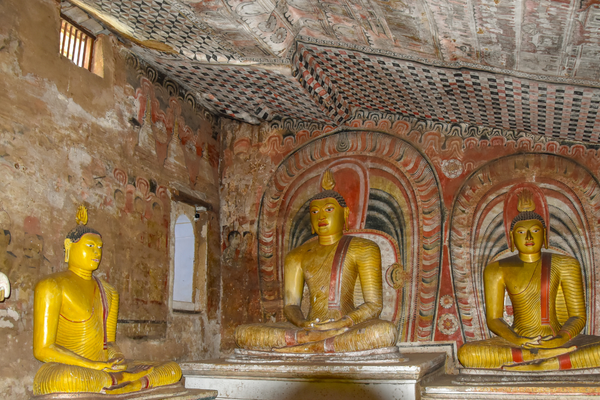Samanabedda Cave Temple – abode for meditating monks – By Arundathie Abeysinghe
 Situated off the beaten track in Uhana in *Ampara–Mahaoya main road approximately six kilometers (3.7 miles) away from Ampara town, amidst spectacular forests, Samanabedda Cave Temple has served as an abode for meditating monks. Samanabedda Cave Temple also known as “Samanabedda Purana Gal Len Viharaya (meaning Cave Temple in Sinhala)
Situated off the beaten track in Uhana in *Ampara–Mahaoya main road approximately six kilometers (3.7 miles) away from Ampara town, amidst spectacular forests, Samanabedda Cave Temple has served as an abode for meditating monks. Samanabedda Cave Temple also known as “Samanabedda Purana Gal Len Viharaya (meaning Cave Temple in Sinhala)
Department of Archaeology has declared the Temple Complex as an archaeological site. Ruins of a massive cave temple are scattered in the forest. Yet, proper archeological investigations of the Temple Complex have not been carried to date and many ruins in the location remain unexplored.
Drip ledged caves of diverse sizes designed as abodes for meditating monks and a ruined stupa (dagoba) with stone pillars are engulfed by jungle. There are also base stones, debris of old structures on the rock plateau located towards west of the stupa. One of the *drip ledged caves had been refurbished recently and utilized as an Image House with a colorful reclining Buddha Statue dating to *Kandyan era.
There are several statues carved out of stone in the Temple Complex and these statues are either broken or disheveled and are located amidst the jungle while remnants of the buildings that sheltered them are found around them.
A stairway carved to the rock plateau leads to the summit of the mountain and there are more drip ledged caves as well as a pond carved into the rock with crystal clear water throughout the year, irrespective of weather conditions. There is a ruined moonstone that has been utilized as a footstep by the residing monks in the past.
During the past, the Temple Complex has been invaded by treasure hunters who vandalized the valuable artefacts in search of items of great value. According to folklore, several valuable items including gem stones, gold and jewelry have been buried in the Temple Complex during the construction process.
According to scholars, the Temple Complex has been constructed during the reign of King Saddha Tissa (137–119 BC) under his guidance. King Saddha Tissa ruled the Kingdom of Digamadulla under the governance of his brother *King Dutugemunu.
At present, wild elephants roam freely in the Temple Complex at dawn and dusk as the Complex is engulfed n jungle.
- Ampara – Located in the Eastern Province of Sri Lanka 360 kilometers east of Colombo, Ampara is the main town of Ampara District.
- Drip ledged caves – A drip line or ledge carved around the mouth of a cave shelter in order to preserve the interior of the Cave as well as meditating monks from rainwater. This type of ledge protected the interior of the Cave from rain water runoff flowing down the external face of the rock, instead of water flowing inside Cave during the rainy season. In the past, drip ledges were a common feature of many cave temples.
- Kandyan era – Kandyan period is from 1597-1815, the last independent monarchy of Sri Lanka. Kandyan Kingdom is located in the central region of Sri Lanka. The Kingdom was independent from Portuguese and Dutch rule. Later, the Kingdom was colonized by the British in 1815.
- King Dutugemunu – Also known as “Duttagamini”, Prince Dutugemunu was born to a royal family in southern Sri Lanka. His parents were King Kavantissa and Princess Vihara Maha Devi. Prince Dutugemunu became King Dutugemunu (164 BC – 140 BC). His brother was Prince Saddha Tissa.









